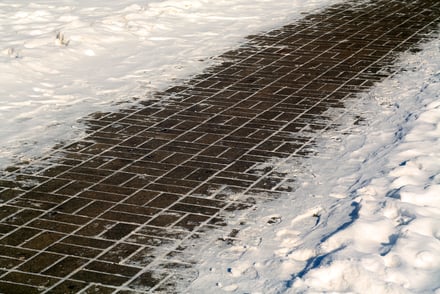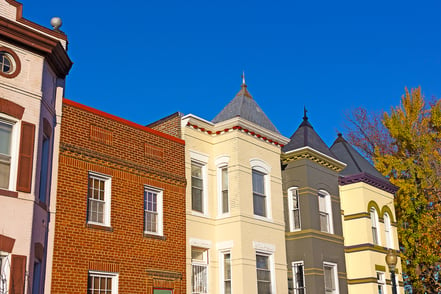Ever since you saw that gorgeous old two-story brick home, you’ve been anxious to buy it. It’s a charming historic Washington DC row house in a beautiful, walkable neighborhood. But now you've discovered a bowed and bulging brick wall... should you back away?
The vibrant neighborhood is a historic district that has always played an important part in the nation’s and the city’s history. You have long wanted to live here.
Even though you have walked and driven by it many times, this will be your first up-close look at the home with the real estate agent. So naturally, the possibility of owning a residence with so much character in such a beautiful neighborhood excites you.
However, once you see the bowed wall in the back, you can’t unsee it. Can it be fixed and pass muster with a building inspector or structural engineer? Is it worth the expense to repair structural damage to an old building, given its already hefty listing price?
Why Are the Walls Bulging?
The bulge or bow could be a small portion of the wall where moisture got behind the brick, though the bow or swelling could extend ten or twelve feet across the wall. This condition happens quite frequently under window and door frames.
Bowing and bulging brick walls are more prominent than you would think, especially on old homes, when the mortar gets old and begins to crumble. Typically, brick has a lifespan of around 100 years or more, while the mortar holding the bricks in place is rated for about 25 to 50 years at best.
When the mortar gets brittle and starts crumbling or cracking, the rain running down the walls seeps into the cracks and openings, pushing the bricks outward.
What to Do?
First, you must determine what is causing the bow or bulge. It could point to excessive foundation settling, which could mean catastrophic structural damage if not rectified. Therefore, it is critical to get an expert in preserving and restoring historic brick buildings to examine the condition.
If the bow is caused by excessive moisture behind the brick, that must be identified and eliminated with historically appropriate tuckpointing. A structural tie-rod may be needed to hold the bowed wall in a structurally sound position as part of the tuckpointing process. Never attempt to fix these bows yourself, particularly with older homes built before 1930 and those officially designated as historic properties.
Tuckpointing or Repointing
Many experienced bricklayers will not tackle a bulging brick wall unless they have specific experience tuckpointing as historic preservation. The brick wall likely did not just start bowing during the recent winter. Although typically, winter is the season when it starts. As the temperature changes, the cracks open further, allowing more water to enter.
You should seek out a tuckpointing professional who is experienced and knowledgeable about fixing bulging brick walls, fences, and chimneys caused by weather and the natural aging process. They are experienced in addressing such issues in older homes and those which are officially designated as historic. They will use historically accurate materials and know-how to match the repointing style to the building’s period.
Historically Recognized Brick Homes
If your home is in DC, permits will be needed for any brick repointing of historically significant homes. Ask our tuckpointing professionals at Renaissance Development, LLC about tuckpointing your historic brick home. Check our portfolio of before and after pictures. We’re very proud of our tuckpointing and restoration projects in Old Town, Alexandria, Georgetown, Capitol Hill, and all throughout Washington, DC.
Closing Thoughts
Bowed and bulging brick walls threaten a home’s structural integrity and should not be taken lightly. The longer the condition goes without attention, the more damage could occur, not just to the brick but also inside the walls.
If you’ve found the home you want to buy, then do your homework about what will be involved in addressing the areas of concern. A restored and well-maintained historic brick home in Washington, DC, is an excellent investment and one that will hold its value for decades to come. In all likelihood, it will give you years of satisfaction if you are prepared to invest in it now.
Renaissance Development professionals are experts in restoring and maintaining historic brick homes and structures. Contact us for a consultation regarding the care of your brick home or structures today.
Sep 7, 2021 10:01:57 AM


